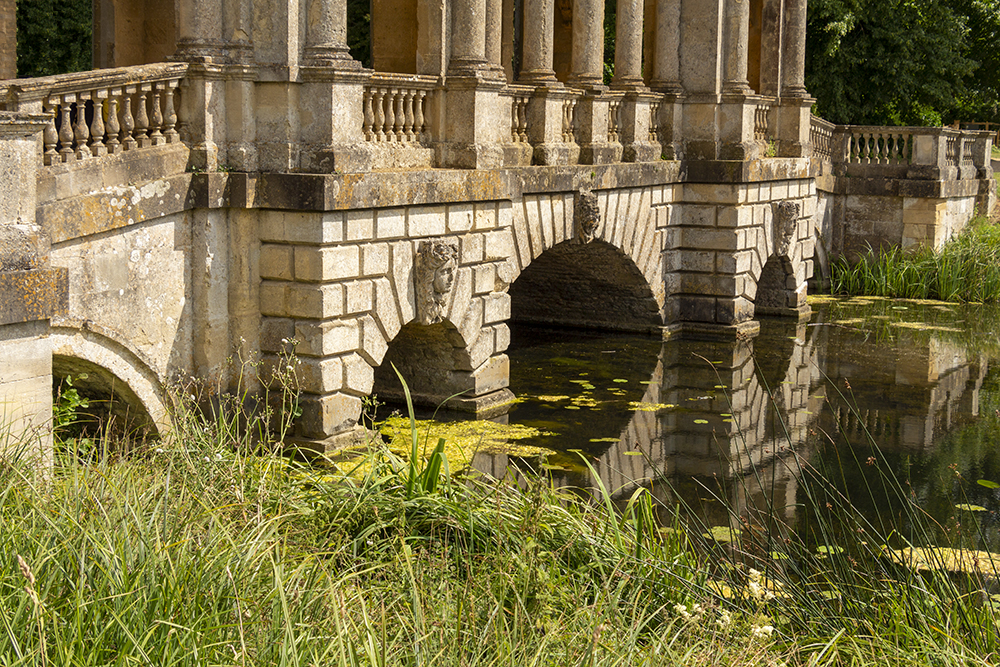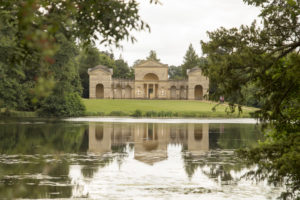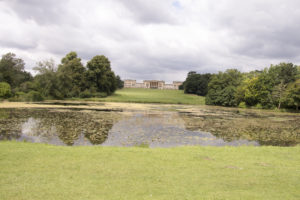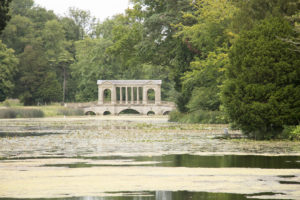Of all the landscape parks of England, Stowe is perhaps the most typical of the tradition which it represents
–Dame Sylvia Crowe, Garden Design
Stowe is rightly regarded as a defining example of an English Landscape Garden. Though not as beautiful as Stourhead; it is better than any other garden at capturing the spirit of this school of garden design. It was effectively constructed in the 18th century and was the product of the century’s great garden designers. Sadly, subsequent development has meant the garden can no longer be truly seen as its creators intended but its structure still shines through.
This is a garden built to impress, and it does! The approach to the house starts proper at the village of Buckingham two and a third miles from the house with the one and half mile long, dead straight, tree lined Stowe Avenue. As you approach the house up Stowe Avenue the view of it through the Corinthian Arch changes as the road follows the undulations of the countryside and having arrived at the arch the visitor can view the vast house across open country and a lake but, true to the spirit of the English Landscape school, they must wait to explore this Elysian Field. Instead they were taken west around the outer edge of the garden only being allowed glimpses of the house and garden as they are taken in a long arc to the house entrance at the north. Unfortunately, and annoyingly common, you no longer approach the gardens as the creators intended but this access can still be walked if you feel energetic or followed on Google Street View if you’re not. You now approach the garden by turning east at the Corinthian Arch and enter though the New Inn where the National Trust has set up its carpark and shops before walking down to an entrance by the West Pavilion.
This is the problem with the garden, the garden is no longer approached as intended, the house and some of the grounds have be taken over by a private school with its own needs and a large chunk of best part of the garden has become a private Golf Course. In a perfect world, the whole house and garden would be reunited and the approach reworked to return it to much nearer to the original intention. This is unfortunately unlikely to happen as the National Trust is hard pushed to fund the upkeep of what it has at Stowe
The idea behind this school of design was the creation of the Elysian Fields by the subtle manipulation of the English countryside which was then presented and viewed in a controlled way. So, successful was this at Stowe it is now often to distinguish where nature stopped and man took control. It was a rebellion against the more formal French style and lead to many fine examples both in the UK and the continent being destroyed, but far better suited the English countryside in which it was situated. It also reflects a growing confidence in England with greater political stability and economic prosperity.
This great wealth allowed gardens to be created on a truly lavish scale and Stowe was furnished with a very large number of garden buildings and ornaments; nearly all for pure decorative purposes and those from necessity were lavishly ornamented. This is perhaps the problem with the English Garden School; however beautiful and well-crafted a Greece temple has no place in an English countryside. It clearly looks contrived. Beautiful, stunning: but still contrived. That is not to say Stowe is not a great delight to walk around and marvel at: it is without question. It can never though totally blend in with its surrounding countryside and its reliance on quite a narrow range of plants lead to the style giving way to a more plant centred one as the Victorians looked to show off the new plant introductions flooding into the country from the rest of the world.






